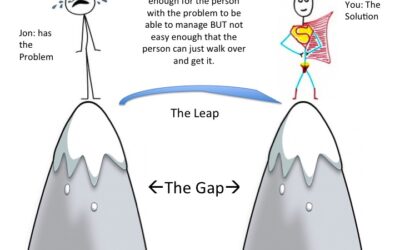Thinking Through Your Business Environment Relationships

A Business is an enterprising entity, which is positioned in the larger market environment to organize its people effort, assets, and focus on either, Start-up, growing, maturing and declining stages, of operations, to convert its assets into commercial products and services, that communicate values intended to meet customer needs, wants, challenges, and behavior, for effective exchange of offerings in external market.
These Marketing activities, are affected by several forces and factors in the environment. Some of these factors are within the control of the business, while most of them are uncontrollable, and the business has to adapt itself, to avoid being affected by changes in the factors. The grouping of these internal and external forces and factors together, form the marketing environment in which the business operates.
In practice, marketing activities of a business must be integrated, with its marketing environment, to sharpen its internal capacities awareness, and focus on external forces and factors, navigate its challenges to affect the company ability to build relationships, necessary to serve its customers in markets positively.
This is meant to compliment, the aim of every business to know the customer well enough to create brand awareness, and target highly qualified leads to achieve its goals in market. Organisation, have express need to emphasis relationship building initiatives, to stimulate mental motivation for business environment relationship building, with focus on creative customer service delivery, as essential business touch point. Considering the fact that, relationship with the target customer, amidst combined forces and factors of Internal, and External environment, have critical effect on the company ability to build relationships and serve its customer in the market. The enabling atmosphere, for business relationships in markets, recognizes the roles of internal environment as important as external environment in market.
It’s a complex, constant and rapidly changing, Business environment structure, which its component structures, require clear definitions to facilitate relationships building in markets, for direct creative decisions making and guide a business journey in the market.
INTERNAL BUSINESS ENVIRONMENT COMPONENTS
The internal environment of business, includes all specific forces and factors of the organisation, which affect its marketing operations. It’s the tasks environment under the marketer control and can be changed with the changing external environment. It’s components include the following:
TASKS: The mental, and physical organizational skills.
IDEAS: industry market size, growth rate, experiences, current situation, and reflective perspectives.
FUNCTIONS: Planning, Organizing, Leading and Controlling.
STRUCTURE: ownership structure, Executive management, Business and operations management.
PROCESS: Board of directors, Executive, Business and Operations management processes.
RESOURCES: Human resources, Capital assets, Materials/Supply, Finance.
CAPABILITIES: stock of available mental and physical organizational skills.
CAPACITIES: stock of available Mental and Physical skills, and Capital resources required to accomplished relevant, specific project tasks.
MEASUREMENT: performances tracking processes capacities.
These forces and factors are controlled by the business and engaged in content marketing building.
They can be directed and driven to respond to customer needs, wants, challenge, and behavior in market.
They can be changed in response to the changing external environment.
Organisation are known to be in the Centre of environment change, to organize its people effort, study and identify challenging behavior, and take responsibility to ask questions, by exercising, experienced thinking, observations thinking, reflective thinking, reasoning thinking, to generate facts and process information that guide understanding of customer situation in market. .
- ORGANISATIONAL FORCES AND FACTORS:
An organisation is made up of organized structure of people, as Leaders, Managers, Teams workforce with structured effort, whose production efficiencies are directed to drive processes and resources for creating, communicating, delivering and exchanging offerings that meet customer values in market at a profit. These organisational forces and factors are specified as follows:
- Controllable forces and factors, that can affect a business relationship building to serve its customers in the market.
- They are directed and driven by people to respond to customer needs, wants, challenges, behavior in market external environment
- They are structured and applied to understand customer situation in market.
- They are applied to determine customer problems insight in organisation
- They are applied to determine processes alignment in organisation journey.
- They are applied to determine stake holder interest in organisation journey.
- They are applied to integrate strategies and tactics in organisation journey.
- They are applied to workout action programme in organisation journey.
These functions are important, because, every organisation is in Business to generate ideas and answer questions on where customers are coming from, where they are now, and where they want to go to. These questions are subject to screening, through critical thinking processes of experience, reasoning, observation, reflective thinking, to evaluate perception of customer bearing and perspectives in the market, by communicating values, to meet their needs, wants, challenges attitude and behaviors.
The Organisation must define its:
- purpose in market of interest.
- Scope in market of interest.
- Direction in market of interest.
- Vision in market of interest.
These internal organisation forces can boost content marketing, when they are optimally managed. On the other hand, they are factors that are resistance to growth both, internally and externally, if processes of awareness, interest, desire, knowledge, abilities and re-enforcement are not sufficiently acquired by the organisation’s people or workforce.
- THE EXTERNAL MARKET ENVIRONMENT
The external market is divided into MICRO and MACRO economic forces and factors.
MICRO ECONOMIC FORCES AND FACTORS `
They are uncontrollable group of forces with needs, wants, challenges, behavior.
They are factors which respond to change in the environment.
They have value expectations
They are studied to understand their situations in market
Organisation, in the process of solving customer problems should understand its situation in market, goals and objectives in order to learn about where its coming from, its current situation and where it’s going to.
The Micro-component of the external environment is also known as the tasks environment with specific forces. It comprises of external forces and factors that are directly related to the business. These include the following:
- Customers
- Markets
- Channel firms
- Competitors
- Suppliers
- Public
- Macro-Economic forces.
The Organisation, in the process of entering market to pursue opportunities in specific Industry environment, must have a vision, mission, of identified opportunities, and set objectives and goals, within which to study, and understand customer problems to proffer solutions. It’s the baseline for customer bearing and perspectives assessment in market, to determine personal judgment, for logical relationship decisions, on what to be or not to be. Having a vision helps promotes best practices motivation, perception, learning, beliefs and actions, necessary to keep the Organisation ahead of competition in market space.
- These forces are groups of customers and stakeholders that represent sources of opportunities in the environment.
- They are uncontrollable group of forces in the environment.
- They have needs, wants, challenges, behavior, and value expectations.
- They respond to market threats, forces and factors.
- They are sources of opportunities, challenges, risks, and uncertainties.
- They respond to change in the environment.
- Organisation people must study the environment to identify their needs, wants, challenges, behavior in market spaces.
- MACRO-ECONOMIC FORCES AND FACTORS:
The macro component of the marketing environment is known as the Broad environment. It constitutes the external factors and forces which affect the industry as a whole, with indirect effect on the Business. They are referred to as the general forces, which include the following:
- Uncontrollable forces and factors.
- They are threats that offer resistances to Organisation relationship building, for creative customer service delivery in the market environment.
- They are independent group of dynamic forces and factors which integrate with organisation and micro economic forces in the market to create values.
- They must be studied and understood by organisation people.
- They must be aligned with on the bases of scientific, technical and knowledge driven approach to customer situation in the market.
- They are product of the larger marketing environment.
- Political forces
- Demographic forces
- Economic forces
- Social forces
- Technological forces
- Ecological forces
- Geographical forces
These factors and forces influences, the Organisation’s relationships in market space and manifest as market index:
- Inflation rate in market space
- Unemployment rate in market
- Interest rate
- Consumer spending
- Consumer income
- Resources investment
- Foreign direct investment
- Government spending
- Net export and other variables.
BUSINESS ENVIRONMENT DYNAMICS
Business environment is the sum total of all the external factors that influence the functioning of the Business. It is referred to as the comprehensive mega force consisting of all external inputs.
It’s specific and general forces: Business environment is made up of both Specific and General factors. Specific forces refer to the customers, competitors, investors and others, which have a direct effect on the day to day working of the Business, while the General forces refers to social, political, economic, technological and other forces, which affect operations of the business indirectly.
Business environment is dynamic in nature. It keeps on changing, for example, change in government policies, change in taste and choice of the consumers, change in technology to mention in brief. Usually, these changes can be triggered by internal or external factors.
Uncertainty: Business environment is very uncertain as one cannot predict what will happen in future. For example, business trend in fashion, information technology, industries and others. It’s dynamic nature, makes it all more challenging to handle uncertainty.
MARKETING ENVIRONMENT RELATIONSHIP IMPORTANCE
The Organisation people are its internal customers, who should be convinced about its vision and mission as well as products and services offe.
They should have sound awareness, interest, desire, knowledge, ability and re-enforcement of its content marketing processes and relationships with external environment to make things happen. An Internal customer satisfaction is essential touch point support, for reflective satisfaction of external customers.
Marketing environment provide critical interactive atmosphere within which:
- Organisation mental skills are developed and applied to activate value creation activities in market.
- Organizational physical skills are developed and applied to deepen sustainable growth in the business journey in markets.
Organizational mental skills, involves the following:
- Capacity to meet deadline in market
- Time management capacity in market
- Delegation of responsibilities in market
- Setting goals and objectives
- Understanding customer situation
- Problems solving and decisions making
- Planning integration
- Strategies and tactics alignment
- Team management
- Performances tracking and management control
- Projects management
ORGANISATION PHYSICAL SKILLS DEVELOPMENT
- Supply chain management processes
- Production lines management processes
- Distribution chain and channel management processes.
In conclusion, it is time to develop your people knowledge-based skills, to create innovative engine, by empowering them to imagine breakthrough ideas, and create a culture of change to make things happen in relevant industry environment. Dare to generate a deep and sustainable change in your organisation, to build, a good fit, for Global business environment change, responses to Transcovid 19 pandemic gaps in markets. Small, medium and big enterprises stand to take risk, sacrifice short term focus and make tough discussions to navigate challenges for sustainable goals achievement.
Thank you for your time and comment.
